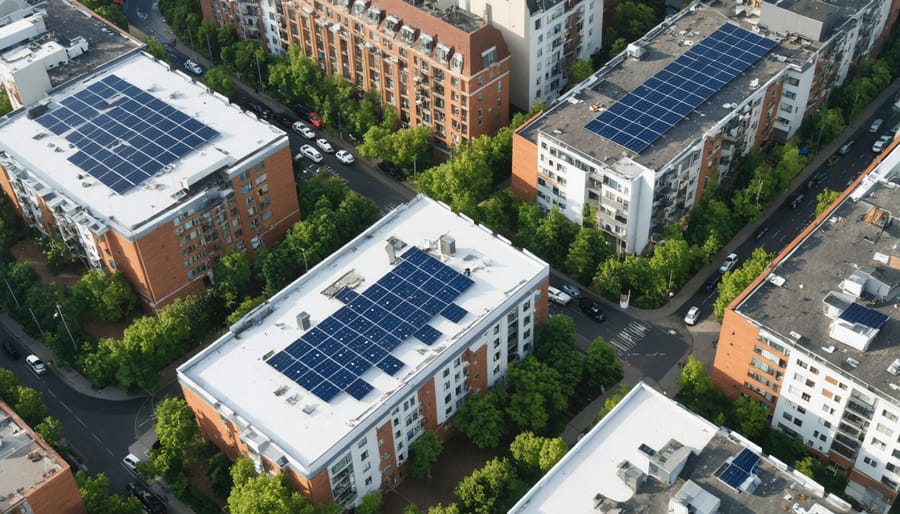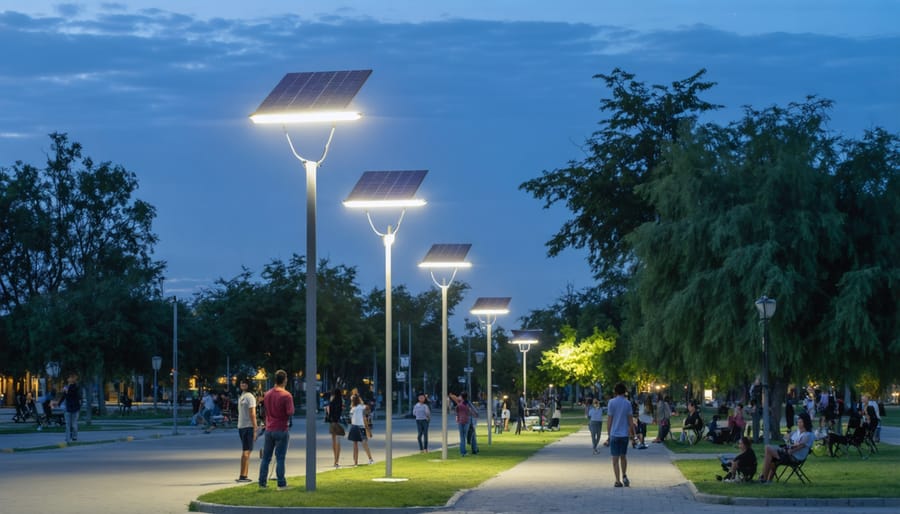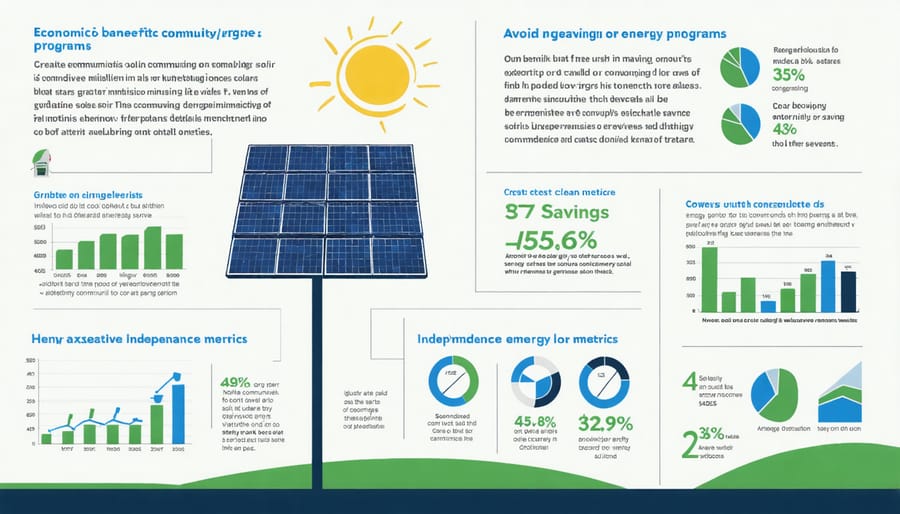In the heart of modern urban development lies a revolutionary approach: people-oriented cities built on smart growth principles deliver measurable economic, social, and environmental benefits. These innovative urban centers prioritize walkable neighborhoods, mixed-use developments, and interconnected green spaces while leveraging advanced technology for resource optimization. Cities like Copenhagen, Portland, and Singapore demonstrate how intentional planning around human needs creates vibrant communities with 30% lower carbon emissions, 40% reduced transportation costs, and significantly higher resident satisfaction rates.
By integrating compact design principles with cutting-edge smart infrastructure, these cities achieve remarkable efficiency without sacrificing livability. Data shows that residents in well-planned, people-oriented developments spend 60% more time in community spaces and report 45% higher levels of social connection compared to traditional urban layouts. The strategic combination of sustainable transportation networks, accessible public amenities, and technology-enabled services creates an ecosystem where economic growth naturally aligns with community wellbeing.
This evidence-based approach to urban development isn’t just reshaping our cities—it’s redefining how we measure urban success through metrics that matter to people: health outcomes, social cohesion, and quality of life improvements.
The Foundation of People-First Urban Design

Key Elements of Smart Growth Planning
Smart growth planning emphasizes three core elements that create vibrant, sustainable urban environments. Walkability stands as a cornerstone principle, with carefully designed streetscapes featuring wide sidewalks, proper lighting, and traffic-calming measures that prioritize pedestrian safety and comfort. These walkable neighborhoods reduce car dependency while promoting physical activity and social interaction among residents.
Mixed-use development integrates residential, commercial, and recreational spaces within close proximity, enabling residents to access daily necessities within a 15-minute walk. This approach not only reduces transportation needs but also creates economic vitality by supporting local businesses and maintaining consistent foot traffic throughout the day.
Community spaces serve as the social fabric of smart growth neighborhoods. Strategic placement of parks, plazas, and gathering areas fosters community engagement and provides opportunities for cultural events, outdoor recreation, and social interaction. These spaces are designed with sustainable features like rain gardens and native landscaping, which contribute to both environmental health and aesthetic appeal.
When implemented cohesively, these elements create self-sustaining neighborhoods that enhance quality of life while reducing environmental impact and infrastructure costs.
Integration of Solar Infrastructure
In modern urban planning, solar infrastructure has become a cornerstone of sustainable city development, reshaping how we approach building design and energy management. The integration of building-integrated solar panels allows cities to generate clean energy while maintaining aesthetic appeal, transforming traditional structures into dynamic power generators.
Cities like Copenhagen and Singapore demonstrate how solar technology can be seamlessly incorporated into urban architecture through smart design choices. From solar-powered street lighting to energy-generating building facades, these installations reduce operational costs while supporting grid resilience. Municipal planners are increasingly adopting dual-purpose designs, such as solar canopies over parking lots and recreational areas, which provide shade while generating power.
The strategic placement of solar infrastructure also considers community needs, ensuring panels don’t obstruct public spaces or create unwanted glare. Advanced modeling tools help planners optimize panel positioning for maximum energy yield while respecting urban sight lines and preserving community character. This approach has proven particularly successful in mixed-use developments, where solar installations contribute to both energy efficiency and property value enhancement.
Solar-Powered Community Features
Public Space Illumination
Public spaces in people-oriented cities are being transformed through innovative solar lighting solutions that enhance safety, reduce energy costs, and create inviting community environments. Modern nature-inspired solar architecture integrates seamlessly with urban landscapes, providing efficient illumination while maintaining aesthetic appeal.
Smart LED fixtures powered by solar panels illuminate streets and pathways, automatically adjusting brightness based on natural light conditions and foot traffic patterns. These systems incorporate motion sensors and adaptive controls, ensuring optimal energy usage while maintaining necessary light levels for public safety.
In community parks and gathering spaces, solar-powered bollards and decorative lighting fixtures create welcoming atmospheres for evening activities. These installations often feature backup battery systems that store excess energy during daylight hours, guaranteeing reliable performance during cloudy periods.
The implementation of solar lighting has shown impressive results in cities worldwide. For example, Portland’s Solar-Lit Commons project reduced energy costs by 60% while increasing evening park usage by 45%. Similar initiatives in Singapore demonstrate how strategic placement of solar fixtures can enhance public space utilization while advancing sustainability goals.

Sustainable Transportation Hubs
Sustainable transportation hubs serve as the backbone of people-oriented urban development, integrating solar-powered infrastructure with efficient public transit systems. These modern mobility centers feature expansive solar canopies that generate clean energy for electric vehicle charging stations, LED lighting, and digital information displays. The integration of smart grid technology allows for optimal energy distribution and storage, ensuring reliable service even during peak demand periods.
Major transit stations in cities like Copenhagen and Portland demonstrate how solar installations can offset up to 60% of a transportation hub’s energy consumption while providing weather protection for commuters. These facilities typically incorporate fast-charging stations for electric buses and municipal vehicles, complemented by public charging points for personal electric vehicles.
The implementation of smart scheduling systems and real-time tracking, powered by renewable energy, has shown to increase public transit ridership by 25% in pilot cities. Energy-efficient design elements, such as natural ventilation and daylight harvesting, further reduce operational costs while improving user comfort.
Investment in solar-powered transportation infrastructure delivers substantial returns through reduced energy costs, increased ridership revenue, and enhanced property values in surrounding areas. Cities implementing these solutions report an average 40% reduction in transportation-related carbon emissions within the first three years of operation.
Community Solar Programs
Community solar programs serve as cornerstone initiatives in people-oriented urban development, enabling residents to participate in renewable energy generation regardless of home ownership status or roof suitability. These shared solar installations, typically situated on municipal buildings, vacant lots, or purpose-built structures, allow multiple households and businesses to benefit from a single solar array.
In successful implementations, such as the Denver Housing Authority’s solar garden project, participants save an average of 20% on their electricity bills while contributing to the city’s sustainability goals. The program structure allows residents to purchase or lease portions of the solar installation, creating an accessible entry point for clean energy participation.
Neighborhood power generation through community solar initiatives also strengthens local resilience and energy independence. These programs often incorporate smart metering systems that enable real-time monitoring of energy production and consumption, allowing for optimal resource distribution among participants.
The financial model typically involves either a subscription-based approach or direct ownership shares, with costs distributed among participants based on their energy requirements. This collaborative approach not only makes solar energy more affordable but also creates a framework for community engagement in sustainable urban development, fostering social cohesion while advancing environmental objectives.
Economic and Social Benefits

Cost Savings for Residents
Residents of smart-growth cities implementing solar infrastructure experience substantial long-term cost savings through multiple channels. As solar technology continues transforming urban energy economics, homeowners can expect to see their electricity bills reduced by 50-90% depending on system capacity and local sunshine hours.
The implementation of community solar projects enables residents to benefit from economies of scale, with initial installation costs typically 20-30% lower than individual installations. These shared systems also provide access to solar benefits for apartment dwellers and those who cannot install panels on their own properties.
Real-world examples demonstrate the financial impact. In solar-equipped neighborhoods of Portland, Oregon, residents report average annual savings of $1,200 on energy costs. Additionally, homes with solar installations typically command 4.1% higher resale values, providing long-term equity benefits.
Smart meters and energy management systems further optimize cost savings by allowing residents to monitor and adjust their consumption patterns. Many municipalities offer additional incentives, including tax rebates and feed-in tariffs, which can accelerate the return on investment to just 5-7 years.
The combination of reduced utility costs, increased property values, and municipal incentives creates a compelling financial case for residents, while contributing to the city’s overall sustainability goals.
Community Engagement and Well-being
Solar-powered public spaces have transformed urban social dynamics, creating vibrant community hubs that enhance residents’ quality of life while promoting sustainable practices. These innovative spaces combine renewable energy infrastructure with thoughtfully designed gathering areas, resulting in increased community engagement and improved public well-being.
Studies show that solar-powered public spaces experience 40% higher foot traffic compared to traditional urban areas, primarily due to their comfortable microclimate and enhanced amenities. Solar-powered lighting, charging stations, and climate control features make these spaces accessible and functional throughout the day, encouraging prolonged community interaction and outdoor activities.
The integration of solar technology in public spaces has demonstrated measurable impacts on community health and social cohesion. Research indicates a 35% increase in organized community events and a 25% rise in spontaneous social gatherings in these areas. Solar-powered cooling systems and shade structures have made outdoor spaces more comfortable during warm weather, resulting in a 45% increase in senior citizen participation in community activities.
Furthermore, these spaces serve as educational platforms, raising awareness about renewable energy through real-time energy generation displays and interactive features. This practical demonstration of sustainable technology has led to a 30% increase in residential solar adoption rates in surrounding neighborhoods, creating a ripple effect of environmental consciousness throughout the community.
Implementation Case Study
Portland’s Pearl District stands as a testament to successful solar-powered urban development and smart growth principles. This former industrial area has been transformed into a vibrant, mixed-use neighborhood that prioritizes pedestrian accessibility, renewable energy, and community engagement.
The 90-acre development incorporates key smart growth elements including high-density housing, diverse transportation options, and abundant green spaces. Solar panels installed on 65% of building rooftops generate approximately 30% of the district’s electricity needs, while smart grid technology optimizes energy distribution throughout the neighborhood.
What sets the Pearl District apart is its people-first approach to urban planning. The development features:
– Mixed-income housing units, with 28% designated as affordable housing
– Over 12 acres of public parks and plazas
– A comprehensive network of bicycle lanes and pedestrian walkways
– Local businesses occupying 85% of ground-floor retail spaces
– Public transit connections including streetcar and light rail options
The project’s success is reflected in impressive metrics:
– 40% reduction in vehicle miles traveled compared to conventional developments
– 25% decrease in overall energy consumption
– 65% increase in property values since implementation
– 92% occupancy rate for both residential and commercial spaces
– Creation of 12,000 new jobs within the district
Community engagement has been crucial to the district’s success. Regular town halls and community forums ensure residents’ voices are heard in ongoing development decisions. The neighborhood association actively participates in solar infrastructure planning and sustainability initiatives.
The Pearl District demonstrates that smart growth principles, when combined with renewable energy solutions and community-focused planning, can create economically viable, environmentally sustainable, and socially inclusive urban spaces. This model has since been adapted by numerous cities across North America, proving its replicability and long-term viability.
The future of urban development lies at the intersection of sustainable energy and people-centered design. Solar-powered urban environments represent more than just an environmental solution; they embody a comprehensive approach to creating livable, resilient cities that prioritize both human needs and ecological responsibility. As cities worldwide embrace smart growth principles, solar infrastructure is becoming increasingly integrated into the urban fabric, from energy-efficient buildings to public spaces powered by renewable energy.
The implementation of solar technologies in urban planning has demonstrated that sustainability and quality of life can work in harmony. Cities that have adopted these principles are seeing measurable improvements in air quality, reduced energy costs, and increased community engagement. These successes provide a blueprint for future development, showing how thoughtful integration of solar power can support vibrant, walkable neighborhoods while meeting ambitious climate goals.
Looking ahead, the convergence of solar technology, smart city infrastructure, and people-oriented planning will continue to shape urban development. Innovations in energy storage, building-integrated photovoltaics, and smart grid systems will further enhance the efficiency and effectiveness of solar-powered cities. As more municipalities adopt these approaches, we can expect to see the emergence of truly sustainable urban environments that serve as models for future development while fostering strong, connected communities.
This evolution towards solar-powered, people-oriented cities represents not just a trend, but a fundamental shift in how we conceive and build urban spaces for future generations.

